Manitoba Insect & Disease Update
Issue 5: June 27, 2018
Summary
Diseases: Early season root rot has been reported in both soybeans and sunflowers.
Insects: Current insects to watch include grasshoppers, diamondback moth and thrips on barley.
Root Rot
Samples of sunflowers from the south-Interlake were submitted showing typical root rot symptoms. These symptoms include wilting of the plant and pinching off at the soil line. When the plants were examined more closely and cut longitudinally the pith also showed brown discolouration. The causal agent is unknown, but the samples have been submitted to the lab. Fusarium root rot is suspected as it typically thrives under drier conditions. Affected plants were scattered throughout the field and the infection was severe enough in cases that some plants will be a complete loss.
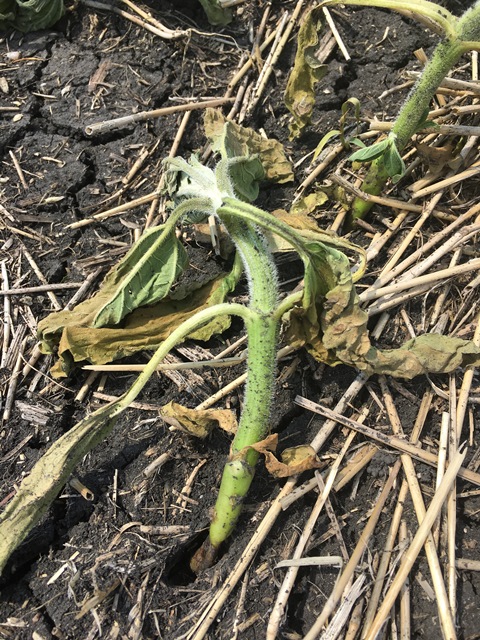
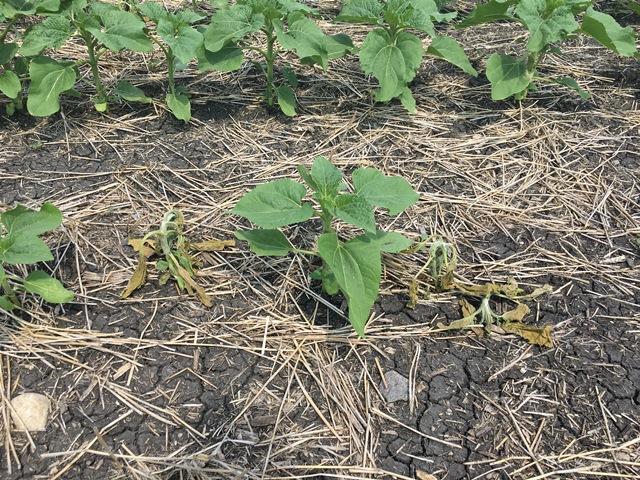
Figure 1. Sunflower root rot symptoms (Image courtesy of Morgan Cott).
Root rot has also been reported in soybeans in the central and southeastern regions. Again, these samples have been sent to the lab for confirmation, but results are not available at this time. Phytophthora root rot is suspected in the sample that came from a heavier clay soil in central Manitoba and Rhizoctonia root rot is suspected in the sample that came from southeastern Manitoba. The incidence of disease in these fields was low overall, but affected plants were obvious.
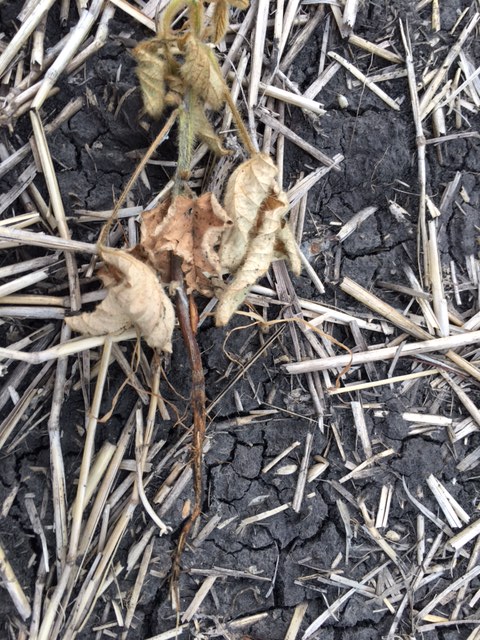
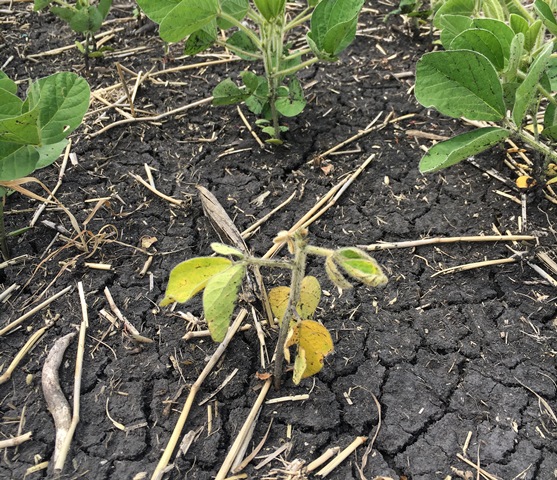
Figure 2. Root rot symptoms in soybeans. Image on left (courtesy of Dennis Lange) showing wilting and root and lower stem discolouration. Image on right (courtesy of Cassandra Tkachuk) showing chlorosis and early wilting symptoms.
Diamondback Moth
Some in the Central and Eastern regions have reported a lot of diamondback moth flying around while scouting in canola. So it will be important to watch for the larvae as the season progresses. Larval levels will depend on weather (particularly rainfall) and natural enemies.
If noticing a particular stage of diamondback moth (such as adult moths), the following table will help you predict when other stage may appear.
Table 1. Duration of development (days) for various stages of diamondback moth at 20 and 25ºC
Duration of development (days) | ||||||||
|
||||||||
Temp (ºC) |
Egg |
1 |
2 |
3 |
4 |
Egg & larva |
Pupa |
Total |
20 |
5.5 |
3.8 |
2.6 |
2.2 |
3.3 |
16.9 |
6.7 |
23.6 |
25 |
3.0 |
2.0 |
1.9 |
1.6 |
2.9 |
11.1 |
5.1 |
16.2 |
Feeding on pods is where diamondback moth can be most economical. In earlier stages (flowering and vegetative) canola can compensate well for some defoliation of leaves, buds, or flowers, particularly if soil moisture is good. But monitor for excessive defoliation during these stages and check for larvae.
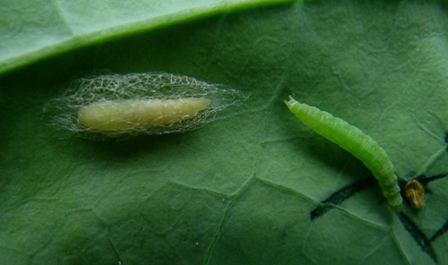
Diamondback moth pupa (left) and larva (right)
Grasshoppers
There have been a few reports of high levels of grasshopper nymphs, mainly around field edges, and occasionally into a field. Populations are variable depending on location. Some insecticides have been applied, in most cases around field edges.
In Manitoba there are 4 species of grasshoppers that potentially can be crop pests, and in recent years twostriped and migratory grasshopper have been our more abundant species. Both these species overwinter as eggs, and much of the egg hatch will occur over June. The egg hatch can be quite staggered though, occurring over a period of a few weeks.
Newly emerged grasshoppers are quite small, about the size of a wheat kernel when they first hatch, and get progressively larger as they go through their 5 juvenile stages. They do not fly until they reach the adult stage, which is often well into July, and depends on temperature. So when scouting for young grasshoppers, look in the vegetation close to the ground to see what is present.
If populations are quite high along field margins, and it looks like control may be needed, a general recommendation is to wait until many of the grasshoppers have grown into their third (out of 5) stage of growth as a nymph, when wing buds would just be starting to be noticeable. At this stage the grasshoppers still cannot fly, and most of the eggs would have hatched. In some areas we are starting to see wing buds on some grasshoppers. Do keep an eye on how much defoliation is occurring to crops along the field edge as well. How many and how quickly they move into the crop often depends on how lush and attractive the vegetation is where hatch occurred. Bran baits as well as foliar sprays are available for grasshopper management where it is needed.
Insect Monitoring Programs
Bertha Armyworm: Highest cumulative counts so far are in the southwest and Central regions, with one trap in the southwest in the uncertain risk category. All other traps are currently in the low risk category.
Table 1. Highest cumulative trap counts for bertha armyworm adults over the trapping period June 3 to June 27, 2017.
0-300=low risk 300-900=uncertain risk 900-1,200=moderate risk 1,200+=high risk
| Location | Region | Count | Risk |
|---|---|---|---|
| Tilston | Southwest | 393 | Uncertain |
| Somerset | Central | 265 | Low |
| Pierson | Southwest | 237 | Low |
| Killarney | Central | 180 | Low |
| Lowe Farm | Central | 106 | Low |
| Rosenort | Central | 97 | Low |
| Mather | Central | 97 | Low |
| Benito | Northwest | 95 | Low |
| Russell | Northwest | 89 | Low |
Diamondback Moth: Monitoring adults of diamondback moth with pheromone baited traps has been underway since the beginning of May. Highest counts have been in the Central region and Interlake, but overall levels are generally low . Table 1 summarizes the highest cumulative counts in Manitoba.
Table 1. Highest cumulative trap counts for diamondback moth adults over the trapping period April 29 to June 27, 2018.
| Location | Count |
|---|---|
| Oak Bluff | 107 |
| Warren | 84 |
| Morris | 81 |
| Winnipeg Beach | 78 |
| Teulon | 71 |
| Balmoral | 49 |
All stages of diamondback moth have now been reported, and we are likely into our second generation of adult moths. In fields where people are currently noting adults flying around as the move through the canola while scouting, it will be important to check for larvae as we move into July.
Insect Identification Quiz
Some have recently been noticing a lot of the following minute insect while scouting crops like soybeans and peas. What is this? And should they be concerned?
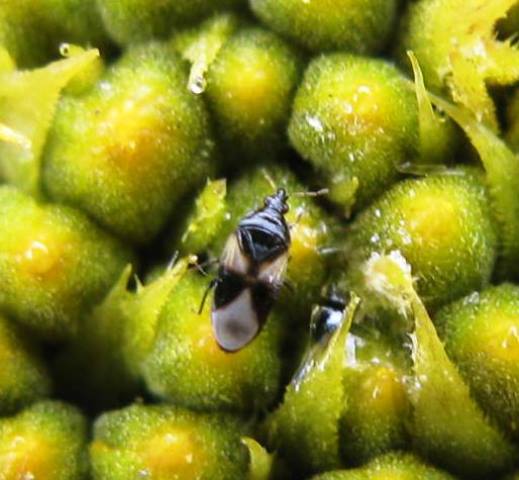
Answer: This is a minute pirate bug. These are predators. The crops they are being noticed in, sometimes in high levels, currently have very low or undetectable levels of aphids. Aphids are one of their favorite foods but they will feed on other insects such as mites, thrips, and small caterpillars. They will also feed on pollen and plant juices, so they are able to sustain themselves in the absence of prey. They can be an important predator of soybean aphids. So good to be seeing an abundance of minute pirate bugs in some fields before soybean aphids are noticed.
----------------------------------------------------------------------------------------------------------------------
Compiled by:
John Gavloski, Entomologist Holly Derksen, Field Crop Pathologist
Manitoba Agriculture Manitoba Agriculture
Phone: (204) 750-0594 Phone: (204) 750-4248
To report observations on insects or plant pathogens that may be of interest or importance to farmers and agronomists in Manitoba, please send messages to the above contacts.
To be placed on an E-mail list so you will be notified immediately when new Manitoba Insect and Disease Updates are posted, please contact John Gavloski at the address or numbers listed above.

